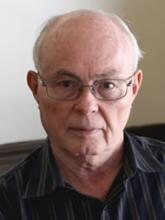George Dillon is retiring this spring after 28 years on the English Department Language and Rhetoric faculty. Dillon earned his BA at Yale and the MA and PhD at the University of California, Berkeley, with a dissertation on seventeenth-century psychology and literary theory. Before joining the UW faculty, Dillon held faculty positions at Southern Methodist University, Indiana University-Purdue, UCLA (visiting), and the University of Maryland.
Author of five books and numerous articles, Dillon has worked across a broad range of areas, often at the forefront of new approaches. In his own words, “My scholarly efforts have been devoted to analyzing the workings of language in literature, academic writing, and advice writing, always with a view toward literary, textual, and discourse theory.” Themes running through a long and productive career are models and theories of language processing and the construction of meaning.
Most of Dillon’s work in the past 20 years has been beyond the print medium, as he has pushed the boundaries of research on semiotics and digital rhetorics, working on electronic texts and images and corpus-based analysis of academic disciplines and other registers. Dillon’s online presence simultaneously shares his latest thinking and projects along with visual/digital resources for others. A valuable example is the on-line book Writing with Images: Toward a Semiotics of the Web. Recent years have seen a pedagogical focus as he has developed new uses of on-line technology to support courses in English syntax, World Englishes, and the corpus-based analysis of kinds of writing.
It’s hard not to see traces of Dillon’s earliest work on cognitive processing and literary texts in his 21st century research:
Here I discuss three of the means by which relations between text and image (and sound) are being created in contemporary Web artworks: I term these textmontage, image-text chains, and dynamic textmontage. Central to the reader/viewer’s processing of hypertext is the cross-modal link. . . . One of the affordances of hypertext links . . . is to weave fragments together into complex signifying structures and to make us alert to how we are constantly shifting interpretive rules and frames to make sense of our world.¹
This sense-making has been at the heart of a research agenda that has spanned 45 years and has ranged from studies of literary texts to advice writing and rhetorics of academic disciplines— all forays in a continuing search to specify how we read.
SANDRA SILBERSTEIN
¹Dillon, George. “Anti-Laokoon: Mixed and Merged Modes of Imagetext on the Web.” The Writer's Craft, the Culture's Technology. Ed. Carmen Rosa Caldas-Coulthard and Michael Toolan. Amsterdam: Rodopi, 2005. 1-21.
